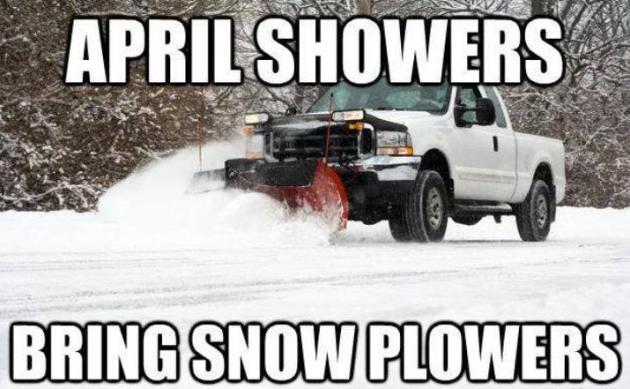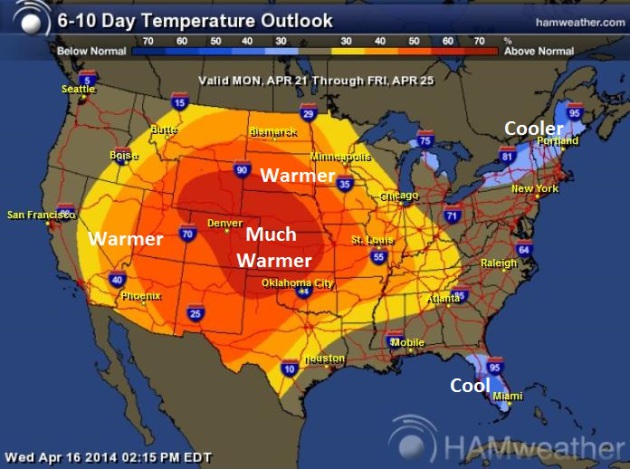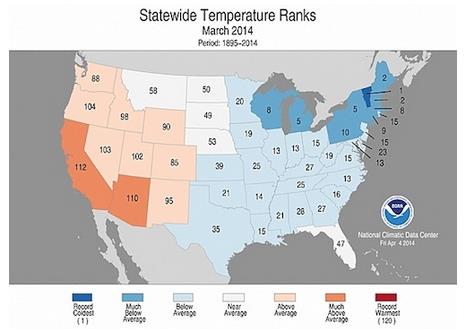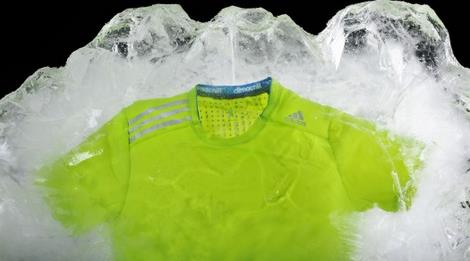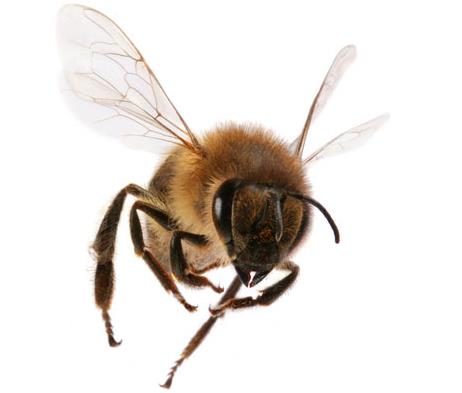The Pollen Vortex
Only
in Minnesota can you be ankle-deep in slush, in a T-shirt, grilling.
This "spring" is taking weather-whiplash to a new & outlandish
extreme. I guess it could be worse. Residents of Washington D.C. just went from 80F to flurries, wind chills in the teens, in less than 24 hours.
Much of Minnesota is waking up to snow; the heaviest bands north & west of the immediate
Twin Cities, where enough warm air wrapped into the storm for a period
of rain, keeping snowfall totals down a bit. But the northern and
western suburbs did pick up a plowable snowfall, with some 1 foot plus
amounts from Anoka County westward to Rogers and Maple Lake. If you're
driving north/west, away from the downtowns this morning, leave plenty of extra time.
Memories of 2013: Duluth picked up 51 inches of snow last April, the snowiest month on record.
In April. Go figure.
One
silver lining to our cold bias: no pollen yet. A researcher at the
University of Tulsa reports that trees are flowering late this spring,
dumping pollen all at once. Details below.
Welcome to a
Light-switch Spring. Like flipping on a light, spring arrives this
weekend. Expect 60s on Saturday; a few showers likely, even a clap of
thunder. Skies dry out a bit Easter Sunday; 70F not out of the question
by Monday & Tuesday as thoughts turn to May; cleaning up the yard
& dusting off the fishing boat.
I'm ready for a long, sweaty summer.
We're due.
*
17" of snow reported in Nowthen, in Anoka County, as of late last night. Remarkable.
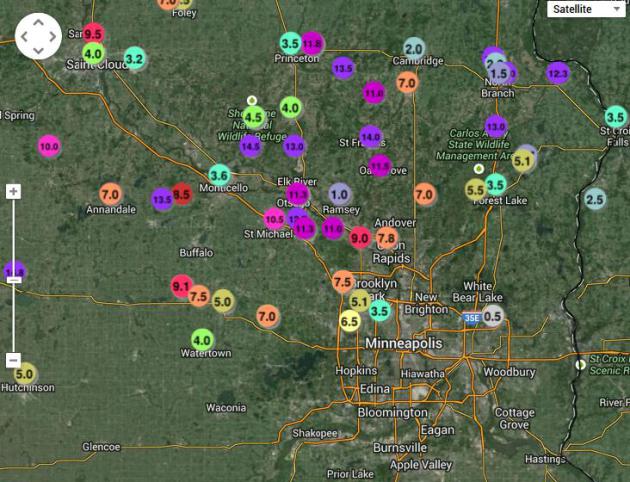 All Or Nothing
All Or Nothing.
I can't remember the last time I saw a snowfall gradient this
impressive across the Twin Cities. In the span of 30 miles you go from a
slushy coating to nearly a foot. The northern and western suburbs got
clobbered by snow Wednesday; an icy mix of rain, freezing rain and sleet
kept amounts much lower south of Minneapolis and St. Paul. The latest
snowfall reports are
here and
here. I pray this is the last time I have to include these links until sometime in October or November.
Like Turning On A Lightswitch.
ECMWF data is still hinting at 60s this weekend; GFS data from NOAA
only keeping us in the 50s. Most days I prefer the European model, and
I'm going to roll the dice and (hope) ECMWF is on the right track.
There's little doubt that spring will stage a comeback next week. It may
be hard to believe, but with a sun angle as high in the sky as it was
on August 25 most of the snow in your yard will be gone by Friday
evening. Graphic: Weatherspark.
New Concept: "Warmer Than Average".
I can't remember the last time I saw a map like this - last autumn
perhaps. NOAA CPC is predicting a warm bias from the Rockiest to the
Mississippi much of next week. That will mean 60s and 70s over the Upper
Mississippi Valley, with a few 80s to near 90F over the central Plains.
Map: NOAA and
HAMweather.
March Was The Coldest In U.S. Since 2002.
Climate Central has all the details; here's a clip: "...
For
the lower 48 as a whole, this March was the coldest on record since
2002 (though it ranks as only the 43rd coldest in the longer-term
records), according to the latest State of the Climate update
from the National Oceanic and Atmospheric Administration (NOAA),
released Tuesday. The average national temperature for the month was
40.5°F, 1°F below the 20th century average for the month. The Great
Lakes and Northeast saw the coolest conditions, and Vermont actually saw
its coldest March on record, with temperature 8.9°F below average..." (image credit: NOAA).
From Polar Vortex To Pollen Vortex?
45 million Americans may be doing more spring sneezing and wheezing
than usual, no thanks to an abrupt end to the Polar Vortex in the coming
weeks. Here's an excerpt of a good explanation from
Mother Jones: "...
The
long winter, the particularly cold weather, it all pushed the pollen
season back quite a bit," says Estelle Levetin, the chair of the biology
department at the University of Tulsa. Individual flowering trees
probably aren't producing more pollen, Levetin says—but they're all
dumping their pollen at once, making this allergy season particularly
difficult for people who are sensitive to more than one type of pollen..." (Pollen file photo: Wikipedia).
Largest Solar Array For Department of Defense Coming to Arizona Army Base.
Take advantage of free energy, especially in sun-drenched Arizona?
Seems like a pretty good idea and the Defense Department is testing new
ways to keep the lights on.
EcoWatch has the story; here's a clip: "
A U.S. Army base near the Mexican border will soon be home to the U.S. Department of Defense’s largest solar array on a military installation. The U.S. Army announced Monday that Fort Huachuca,
in Southeast Arizona’s Cochise County, on April 25 will break ground on
a solar array with panels that collectively will provide one quarter of
the base’s electricity needs..."
Photo credit above: "
Fort Huachuca in Arizona will soon be home to the U.S. Department of Defense’s largest solar array on a military installation." Photo credit: U.S. Army.
Parrots Name Their Children For Life. Robert Krulwich has the details in this piece that ran on
NPR; here's an excerpt: "..."
Most
people say, 'Well, all those calls are just noise,' " Karl told
Virginia Morell, but "I think they're having conversations." Berg has
listened to so many parrots in so many nests for so long, he has that
weeks after birth, these little birds begin to use very specific peeps
to identify themselves to others. Not only that, they learn the peeping
"names" of their parents, brothers, sisters, and use them in
conversation, as in, "Peep-duh-dee-Peep, is that you?"... (File photo:
Wikipedia).
"Climachill" Cools Athletes In Hot Weather. Can I get boxers made out of this material? Inquiring minds want to know. Here's an excerpt from
Gizmag: "
The sports apparel market has no shortage of solutions for cold weather, with waterproof-breathable materials, advanced natural and synthetic insulations, and battery powered heat
among them. But athletes have fewer options in hot, humid weather: take
off clothing, get a cold headband/cloth, or stop exercising and find an
air conditioner or pool. Adidas offers one more. Its new Climachill
fabric combines several cooling elements to keep athletes more
comfortable during hot summer sessions..."
Bees On A Plane.
A flight from Las Vegas to Duluth had to turn around because of...wait
for it...bees? No, truth is stranger than fiction some days. Here's a
clip from
The Duluth News Tribune: "...
Allegiant
spokeswoman Jessica Wheeler said the flight crew reported at 5:30 p.m.
Duluth time that shortly after takeoff, a swarm of bees was clouding the
windshield and bees were being ingested into the plane’s engines. The
crew decided to abort the flight, landing safely back in Las Vegas..."

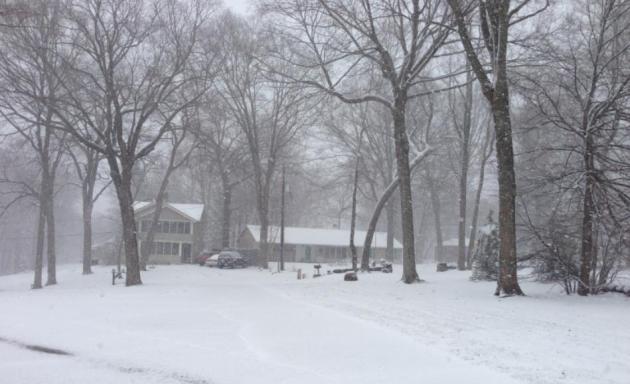
Climate Stories...
The world is losing the equivalent of 50 soccer fields of forest every minute.
NYT. Source: Climate Nexus.
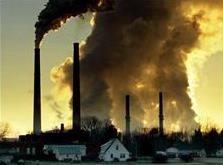 U.S. Greenhouse Gas Emissions Dropped 3.4% In 2012
U.S. Greenhouse Gas Emissions Dropped 3.4% In 2012. Here's an excerpt from
The Los Angeles Times: "
Greenhouse
gas emissions in the United States dropped by 3.4% in 2012, federal
environmental regulators reported Tuesday. The decline over the previous
year was driven mostly by power plant operators switching from coal to
natural gas, improvements in fuel efficiency for transportation and a
warmer winter that cut demand for heating, according to an inventory released by the U.S. Environmental Protection Agency...."
Study Ties Epic California Drought, "Frigid East" To Manmade Climate Change.
ThinkProgress has the details of a new NASA-funded study; here's an excerpt: "...
A new study in Geophysical Research Letters
(subs. req’d) takes the warming link to the California drought to the
next level of understanding. It concludes, “there is a traceable
anthropogenic warming footprint in the enormous intensity of the
anomalous ridge during winter 2013-14, the associated drought and its
intensity.” The NASA-funded study is behind a pay wall, but the brief news release,
offers a simple explanation of what is going on. The research provides
“evidence connecting the amplified wind patterns, consisting of a strong
high pressure in the West and a deep low pressure in the East [labeled a
'dipole'], to global warming.” Researchers have “uncovered evidence
that can trace the amplification of the dipole to human influences...”
* Jeff Masters at
Weather Underground
weighs in on new papers linking the historic California drought and a
persistent polar vortex signature this past winter to rapid warming in
the northern latitudes. Here's a clip: "...
A new study published this week in Geophysical Research Letters,
led by Utah State scientist S.-Y. Simon Wang, found that this jet
stream pattern was the most extreme on record, and likely could not have
grown so extreme without the influence of human-caused global warming.
The study concluded,
“there is a traceable anthropogenic
warming footprint in the enormous intensity of the anomalous ridge
during winter 2013-14, the associated drought and its intensity..."
* Is climate change impacting the ENSO signal in the Pacific? Here's a
technical paper (PDF) with details.
Canada's Climate Warms To Corn As Grain Belt Shifts North. The growing season on the Canadian prairie has lengthened by 2 weeks in the last 50 years; the trends are undeniable.
Bloomberg has a story and video explanation; here's a clip: "...
This is here to stay,” said Gross, who sells CNH Global NV
tractors for Southeastern Farm Equipment Ltd. in nearby Steinbach. His
customers are increasingly devoting acreage to corn. “There are a lot of
guys who are experimenting with it and looking at it,” he said. Corn is
the most common grain in the U.S., with its production historically
concentrated in a Midwestern region stretching from the Ohio River
valley to Nebraska and trailing off in northern Minnesota. It had been
ungrowable in the fertile farmland of Canada’s breadbasket. That is
changing as a warming climate, along with the development of
faster-maturing seed varieties, turns the table on food cultivation. The
Corn Belt is being pushed north of what was imaginable a generation ago..."
January Global Temperature Anomalies. Check out this
video clip
from NASA, showing a persistent pocket of cold over the eastern USA
(thank you Polar Vortex), while most of the rest of the planet was
milder than average. That trend lingered into March.
Turning Our Backs To Global Warming. Here's an excerpt of an Op-Ed at
The Virginian-Pilot that caught my eye: "...
The
problem, as in so many things, is America's paralyzing politics. Since
limiting global warming carries its own small cost - one that will
affect free-spending energy interests most - partisan opposition to
change has been particularly vociferous in America. Global warming has
become just another American litmus test, along with health care reform,
immigration, abortion, unemployment insurance, pay equity. While the
rest of the world is baffled by America's partisan disagreement over a
century-old and well-supported scientific theory, it is also frustrated
by the lack of leadership from the world's only superpower..."
A Risk Analyst Explains Why Climate Change Risk Misperception Doesn't Necessarily Matter.
By the time the symptoms of climate change begin impacting everyone's
daily lives will it be too late to do anything about it? That's why
climate change has often been described as "the perfect problem". Andrew
Revkin takes a look in an interview at his
Dot Earth column at The New York Times; here's an excerpt: "...
Consider
that combating climate change requires nothing less than a radical
restructuring of how the world makes and uses energy, and consider the
overwhelming level of public concern it would take to impose such
sweeping changes on the vested interests profiting by the status quo
(and let’s be honest…to impose such changes on a public comfortable with
the status quo). We’d have to feel we were at war — bullets-flying,
bombs-dropping, buildings-burning and body-bags real, live, NOW “I
am in Danger” war — before public concern about climate change would
grow strong enough to drive those sorts of actions. The psychology of
risk perception warns against the naive hope that we can ever achieve
that level of concern with effective communication, but even if it is
possible, we are just not going to get there in time, a point made
dramatically by the latest IPCC Working Group 3 report..."
